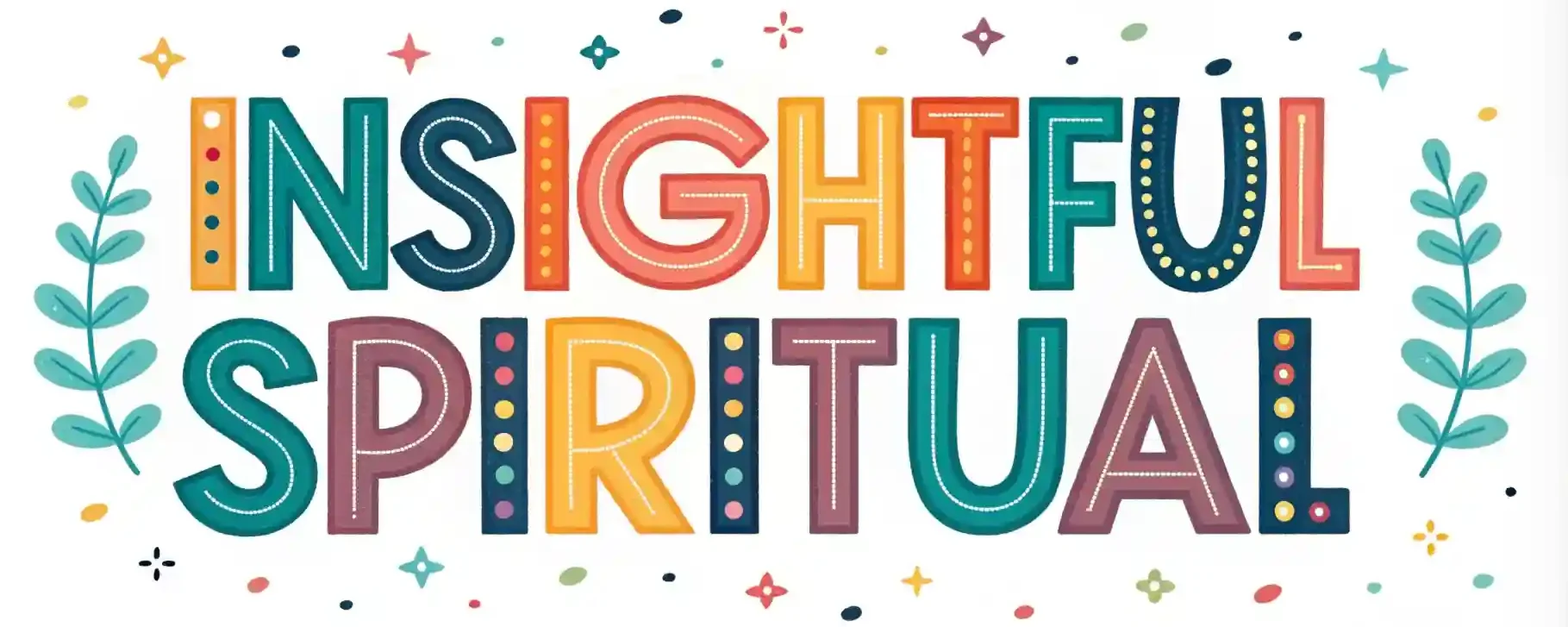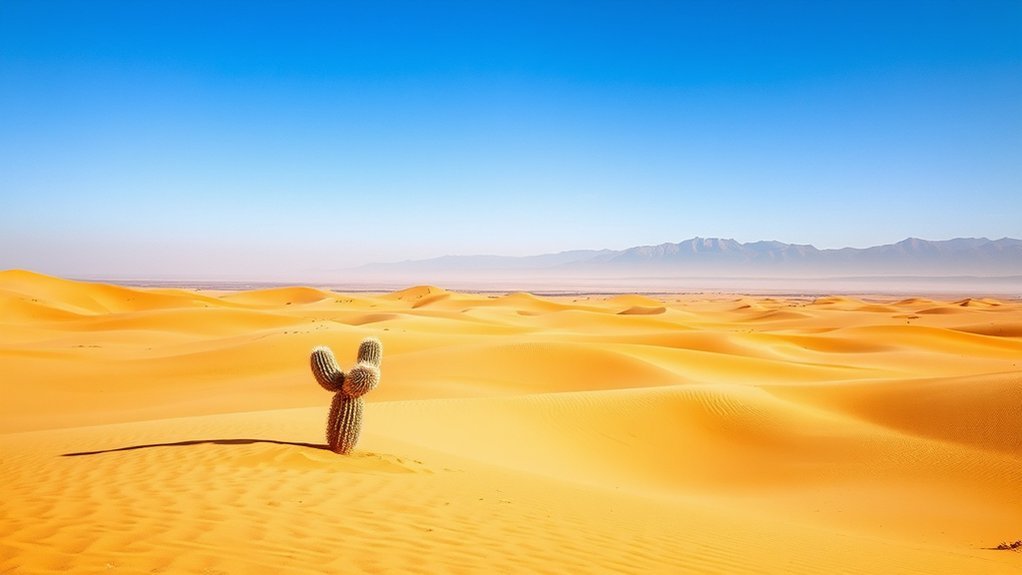Desert Symbolism: Solitude and Spiritual Endurance
The desert is more than just a dry, empty place. It is a space where people can face tough challenges. Being in the desert helps you find inner strength. When you look at its wide, quiet landscape, it makes you think. It teaches patience and resilience. Different cultures see the desert in their own way. Many believe it is a place for spiritual endurance. Sitting quietly in the desert can help you reflect. It gives you a chance to grow and renew yourself. The desert teaches us valuable lessons about solitude and strength. It shows us that silence and stillness can help us become stronger inside.
The Desert as a Reflection of Inner Solitude
The desert shows us what it feels like to be alone inside. Its empty space makes us think and reflect.
When people meditate in the desert, they find it easier to calm their minds and look inside. The wide open land helps us see our true feelings.
In stories, deserts often mean a time to look inside ourselves. They’re quiet places where characters face who they really are, away from noise and fuss.
The emptiness gives us a chance to connect with our inner thoughts. It can help us find peace and clarity.
The silent desert makes us feel a part of ourselves. It teaches us that being alone can be good and life-changing.
Sometimes, the best discoveries happen when we sit quietly and think.
Symbolic Significance of the Arid Landscape in Spiritual Traditions
Have you ever thought about why many spiritual groups see the desert as a symbol of growth and change? In these traditions, the dry land stands for a journey to find yourself and start fresh. An oasis shows how moments of refreshment and hope can come even in tough times. It helps people see that spiritual awakening can happen during hard times.
Stories from desert folklore often tell about pilgrims who look for wisdom. These stories highlight how patience and faith are important. The empty and tough environment makes people think deeply about themselves.
Many cultures see the desert as a place where true strength grows through staying alone and enduring difficulties. By learning what the desert means in different traditions, you can see how it invites us to reflect and find purpose, even when life is hard.
Tales of Resilience: Overcoming Challenges in the Desert
Many stories about the desert show how people face tough times. These stories teach us that being strong comes from understanding the desert.
Oases, or water spots in the desert, can appear suddenly. Then, they can disappear just as fast. This teaches us to be patient and smart with water.
Desert plants also have special tricks. They grow slowly and use little water to stay alive. Even in hard places, these plants thrive.
These stories remind us that we can stay strong too. When you have a hard time, think of the plants and oases. Like them, you can get stronger over time.
The desert shows us that being brave and patient can help us win over problems and find hope even in lonely places.
Artistic Inspirations Drawn From Desert Environments
Art in desert places has always been special. Artists see the unique beauty in the empty, hot land. They make paintings, sculptures, and crafts that show desert plants like cacti and wildflowers. These plants grow in tough conditions. They show how plants can be tough and flexible.
Many people find strength in these plants because they stand strong alone.
Stories from desert cultures also help inspire art. These stories talk about animals, gods, and legends that grow from life in the desert. Artists use these tales in their work. The stories teach about staying strong and feeling connected to nature and spirits.
Modern Interpretations of Desert Endurance and Self-Discovery
In today’s art, the desert shows us more than just sand and heat. Artists see it as a place to grow and learn about ourselves. They show that enduring tough times is about more than physical strength. It’s also about being strong inside.
Many artists talk about oases in the desert. These are places of water and life. They stand for hope and new beginnings, even when things are hard. Oases remind us that we can find peace and refresh ourselves during tough times.
Artists also look at mirages. These are illusions that seem real but aren’t. They make us think about the false ideas and tricks we see in life. When we understand these illusions, we can focus on what really matters.
The desert becomes a symbol of our inner journey. It teaches us that patience, awareness, and strength can help us get through tough times.
This view of the desert encourages us to see ourselves in others. It shows that everyone faces challenges and needs hope. The desert is a mirror of life, and each of us can find our own oasis.
This way, we learn that growth and change are part of being human.
FAQs
How Do Desert Myths Influence Contemporary Spiritual Practices Worldwide?
Desert myths have a strong impact on today’s spiritual practices around the world. These stories from ancient times inspire people to meditate, pray, and do rituals. Many find meaning in desert symbols, which help them find peace, strength, and a sense of connection. People use these old stories to create new ways to pray and reflect. This makes their spiritual practice more meaningful and powerful. Desert myths remind us that we can learn from nature and tradition. They help us feel part of something bigger. Today, these stories guide many to discover inner peace and resilience.
What Ecological Adaptations Enable Life to Survive in Harsh Desert Environments?
In desert places, plants and animals use special tricks to stay alive. Cacti, for example, store water inside their thick stems. This helps them survive long dry times. Some animals like lizards and insects hide in the sand to stay cool and avoid the hot sun. They also hide to protect themselves from predators.
Sand dunes stop moving by plants with deep roots. These roots hold the sand in place. Some plants grow between the dunes. Their roots also keep the sand steady. This helps the desert stay balanced.
Learning about these tricks shows how life manages to survive in harsh deserts. Seeing how plants and animals adapt makes us feel connected to the desert. It also helps us understand nature’s clever ways to thrive in tough places.
How Do Desert Symbols Vary Across Different Religious and Cultural Contexts?
Desert symbols change a lot across different religions and cultures. For example, some cultures use oasis images. These show water and life in the dry desert. Others have desert gods. These gods stand for strength, endurance, and survival.
In one culture, the desert symbol might mean hope. It reminds people that even in hard times, there is a chance for new beginnings. In another group, the desert shows a place for spiritual testing. People see it as a place to grow stronger in faith.
These symbols help people feel connected. They share stories of struggle and renewal. Whether in religion or nature, desert symbols bring a sense of belonging. They show how different groups see the desert as a place of challenge and hope at the same time.
In What Ways Do Desert Landscapes Inspire Modern Philosophical Discussions?
Desert landscapes inspire many ideas in philosophy today. They make us think about being calm and strong. The quiet of the desert helps us reflect on ourselves. When we face the tough parts of the desert, we learn to stay patient and keep going. These deserts show us how to be resilient and brave. They also remind us that feeling like we belong is important. The open space helps us connect with our inner thoughts and feelings. Overall, deserts help us grow in mind and spirit. They remind us to find peace inside ourselves, even in hard times.
How Does Solitude in the Desert Differ Across Historical Periods and Cultures?
Solitude in the desert looks different in different times and places. In many cultures, desert solitude is seen as a time to think quietly. People use it to grow spiritually. They may also see it as a way to clean their bodies or minds. Usually, desert solitude helps people feel connected to others or to their faith.
In different eras, the meaning of desert solitude changes. Long ago, some people went into the desert to meditate or pray. They believed these moments gave them strength and peace. Others used the desert for special rituals or ceremonies. These acts helped them become part of a community.
Today, some still use the desert for reflection or spiritual growth. Others see it as a place to find calm or escape from busy life. Across time, desert solitude remains a space for inner peace, spiritual practice, and connection to others.

Hi, I’m Aurelia Starfrost, your spiritual guide at InsightfulSpiritual.com. I love exploring ancient wisdom and modern practices to help you on your journey. With a focus on meditation and energy healing, I’m here to guide you to find solace within and discover your spiritual essence.








